Physics by the Fire: Match Stick Rocket
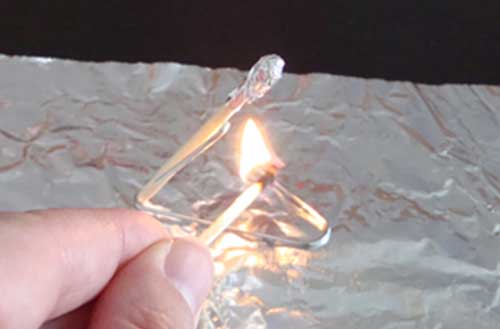
This experiment is a blast! Make your own ant-sized rocket.
What you Need
- 2 matches
- A small square of aluminum foil
- A larger piece of aluminum foil
- A pin
- A paperclip

What to Do
- Wrap a small piece of aluminum foil tightly around the head of the match.

- Insert the point of a safety pin in the base of the aluminum foil, where the stick protrudes, and bend the aluminum foil slightly away from the stick.
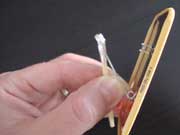
- Make a launch pad from the paperclip by bending the outermost prong out to an angle and then bending the inner loop up, making an approximately 45 degree angle.
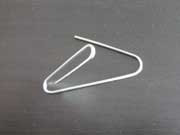
- Place the wrapped matchstick on the launch pad, tinfoil side up.
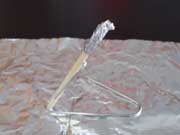
- Light the second match and hold it under the tinfoil wrapped match on your launch pad and wait for the tinfoil wrapped match to ignite.
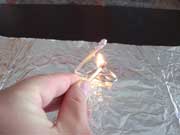
*Never point the tinfoil wrapped match at anyone or anything that may be lit on fire. We recommend keeping a fire extinguisher or a glass of water nearby as a precaution and remember that the tinfoil will be hot. Also, if you are not an adult, please find one to help you before doing this experiment.
What’s Going On?
"Every action has an equal but opposite reaction," according to Isaac Newton and his third law of motion. When the match under the tinfoil reaches a temperature where it combusts, or lights on fire, more gas molecules, tiny particles, form. You can see them as smoke. These molecules of gas move really fast and look for a place to escape, but the tinfoil prevents them from escaping. The only place that the molecules can exit is through the small hole that you made with the pin, but because the exit is so small not all the molecules can escape at the same time. Because the molecules can’t all exit at the same time they create pressure as they push against the inside walls of the tinfoil chamber. As the molecules all try to rush out of the hole, they create thrust, the movement of mass in one direction. The mass moving in one direction, the action, will cause a force in the opposite direction, the reaction. The thrust from all the molecules escaping causes the matchstick to be propelled into the air.
Try This!
- Try making bigger and smaller holes at the base of the tinfoil
- Try blowing up a balloon and letting it go? What does that balloon have to do with your rocket?











